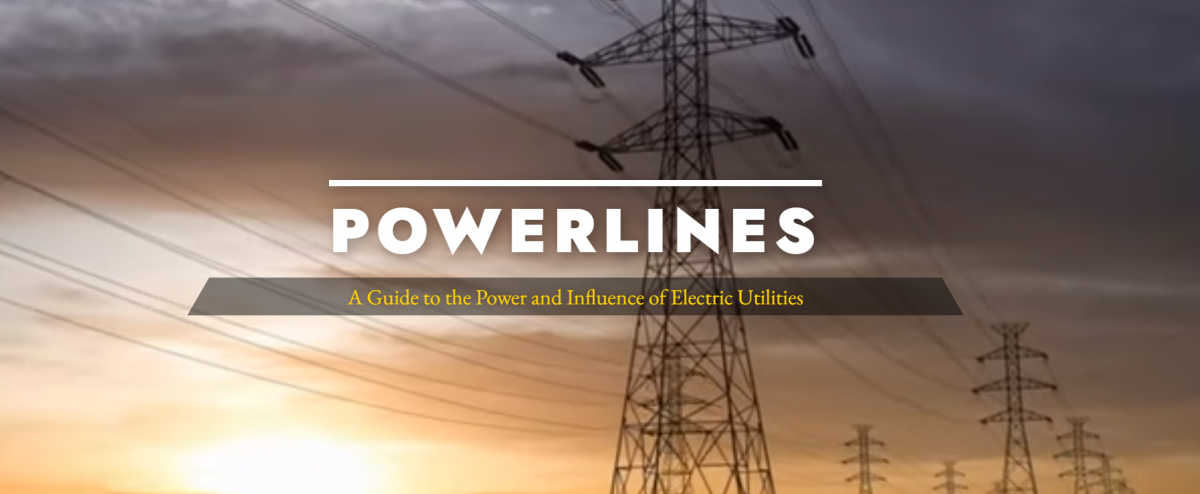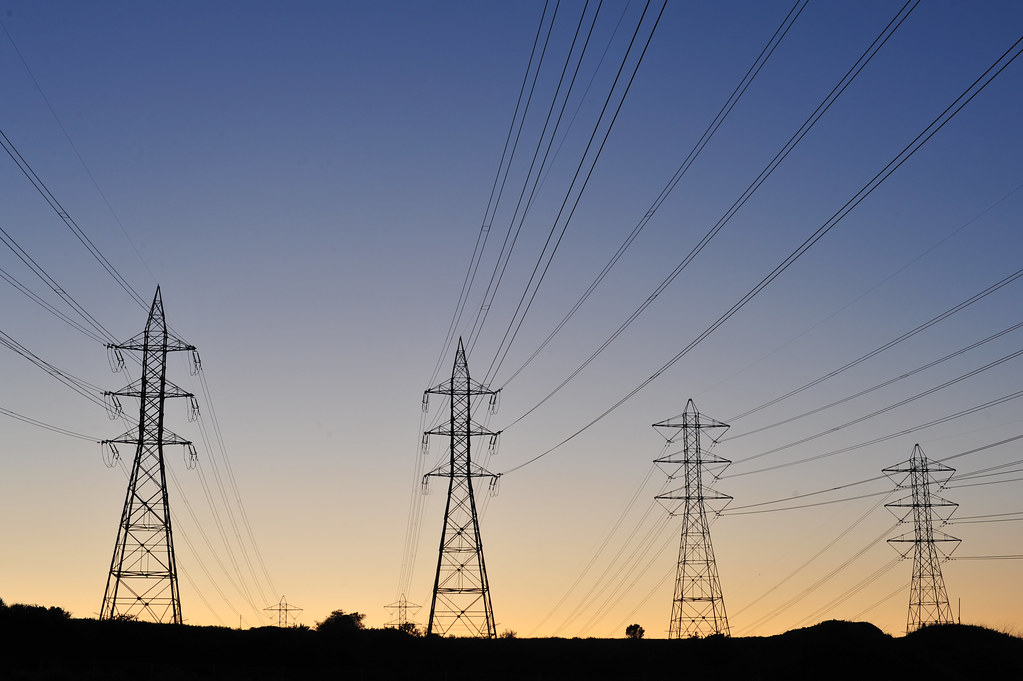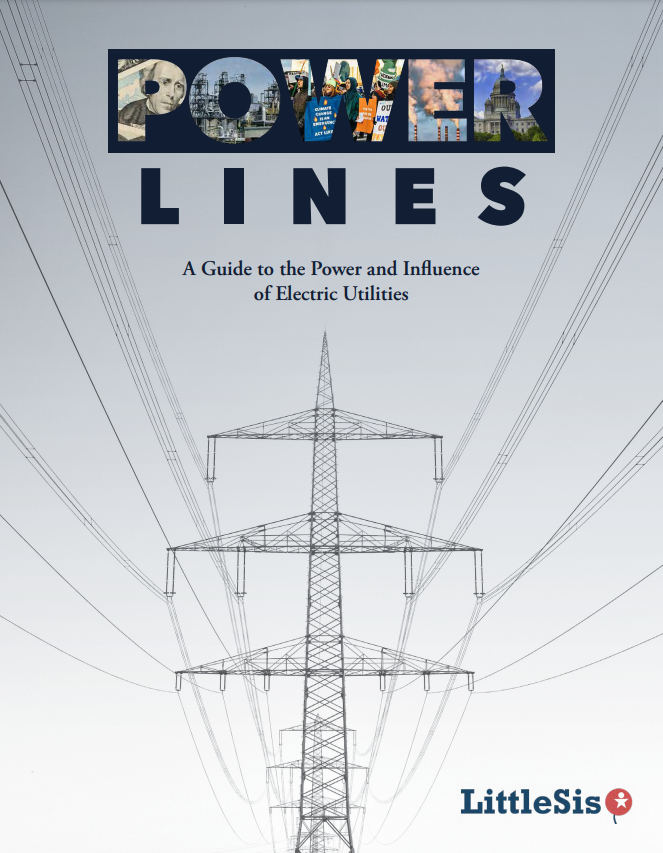Image: “Transmission Lines” by Chris Hunkeler (Creative Commons)
Hardly a day passes where we don’t read another horror story about utility companies and how they are failing us. Gouging captive customers. Gobbling up bailout money. Stalling on renewable energy. The list goes on.
The pandemic has only made things worse. Covid-19 has wreaked havoc on the lives of utility customers. Millions of people fell behind on their gas, electric and water bills. One study found that utility debt increased from an already crisis-level of $12 billion pre-pandemic to an astounding $32 billion at the end of 2020. Currently, approximately 15 to 20% of U.S. households are behind on their utility bills.
Meanwhile, utilities companies across the country have raked in over a billion dollars in federal CARES Act money while still leaving their customers without electricity, heat, and water.
We at LittleSis released Power Lines earlier this year to assist the challenge against the power and influence of utility corporations. Power Lines is a resource for organizers who want to understand the electric utility industry power structure and how to research and power map it across regions.

Here are just a few recent examples of how utilities are super-exploiting customers and profiting from their captive consumer base:
Oklahoma Natural Gas to customers: either burn fossil fuels or pay a huge exit fee
In the fossil fuel utility industry’s latest attempt to slow the energy transition, Oklahoma Natural Gas is proposing a $1400 ‘exit fee’ to customers who want to disconnect service with them and switch to electric utilities. The public utility is Oklahoma’s largest natural gas distribution company and the oldest corporation in the state, serving one million customers.
This proposal is one of many that the company is pushing to help pay off its over $1 billion of debt, which the company claims to have incurred during the unnaturally cold winter months that hit the state last year. The Oklahoma state government already passed a law that turned the company’s debts into public bonds, giving the company more time to pay back their debt and prevent the debt from being passed down to customers.
Widespread blackouts and protests after Puerto Rico grid privatization
In Puerto Rico, where the U.S.-imposed Financial Oversight & Management Board controlling the island’s finances aggressively pushed the privatization of the Puerto Rico Electric Power Authority (PREPA), months of rolling blackouts have left hundreds of thousands of residents without electricity and driven continued protests.
The June 2021 takeover of Puerto Rico’s grid from PREPA to LUMA Energy LLC, a consortium of the Texas-based Quanta Services and the Canadian firm ATCO Energy, was widely protested by workers across the country as well as civil society and activist groups. LUMA forced PREPA workers to reapply for their jobs and many skilled workers were transferred to other government agencies.
Questions about LUMA’s preparedness to operate the grid were answered almost immediately as blackouts affecting hundreds of thousands began this summer and stretched into the fall.
Puerto Ricans are already facing the task of rebuilding after devastating hurricanes in 2017 and a series of earthquakes in 2020 on top of an aggressive austerity push by the U.S.-appointed control board to finance sovereign debt payments to U.S.-based hedge funds.
Now with widespread blackouts lasting longer, on average, than those that occurred under public operation of the grid, anti-privatization protests have continued and escalated and the U.S. House of Representatives has held hearings questioning the blackouts and executive compensation at the consortium.
Utilities rake in CARES bailout payments while shutting down services
A recent Energy News Network article reports that “a nationwide ban on utility disconnections could have reduced COVID-related deaths by nearly 15% in 2020,” according to one analysis, but that “utility companies lobbied against such ratepayer protections” even as “some paid out billions in CEO compensation and shareholder dividends.”
Moreover, just a handful of these utility companies were behind most of the shutoffs. A September report from the Center for Biological Diversity and Bailout Watch “found six utility companies accounted for 94% of all documented shutoffs.” These were: NextEra Energy (parent of Florida Power & Light, among others), Duke Energy, Southern Company, Dominion Energy, DTE Energy and Exelon. “NextEra Energy alone recorded more than 470,000 shutoffs between July 2020 and June 2021, said the ENN article. “The company received $41 million in CARES Act benefits — which alone could have covered much of the nearly $50 million it would have cost to avoid those disconnections.”
ENN also reports – again, citing the Center for Biological Diversity and Bailout Watch study – that a mere 8.5% of the $1.25 billion in federal bailout money that 16 utilities received “could have prevented every reported utility shutoff.” And throughout all this, executives and shareholders continued to rake in gobs of money: “For example, NextEra Energy paid out more than $2.7 billion in CEO compensation and shareholder dividends — more than 55 times the amount required to prevent all of its utility shutoffs — between April 2020 and June 2021.”
Utilities clearly feel emboldened right now to try to deepen their exploitation of captive customers. These corporations can get their way because they have a powerful network of executives, board directors, and revolving door lobbyists, and money to buy influence through campaign and philanthropic donations.
In order to better challenge utilities, we need to understand their webs of power and influence, as well as the names and networks of the people who really run and prop up these corporations. Check out Power Lines, our resource for organizers on how to research and power map the utility power structure.

